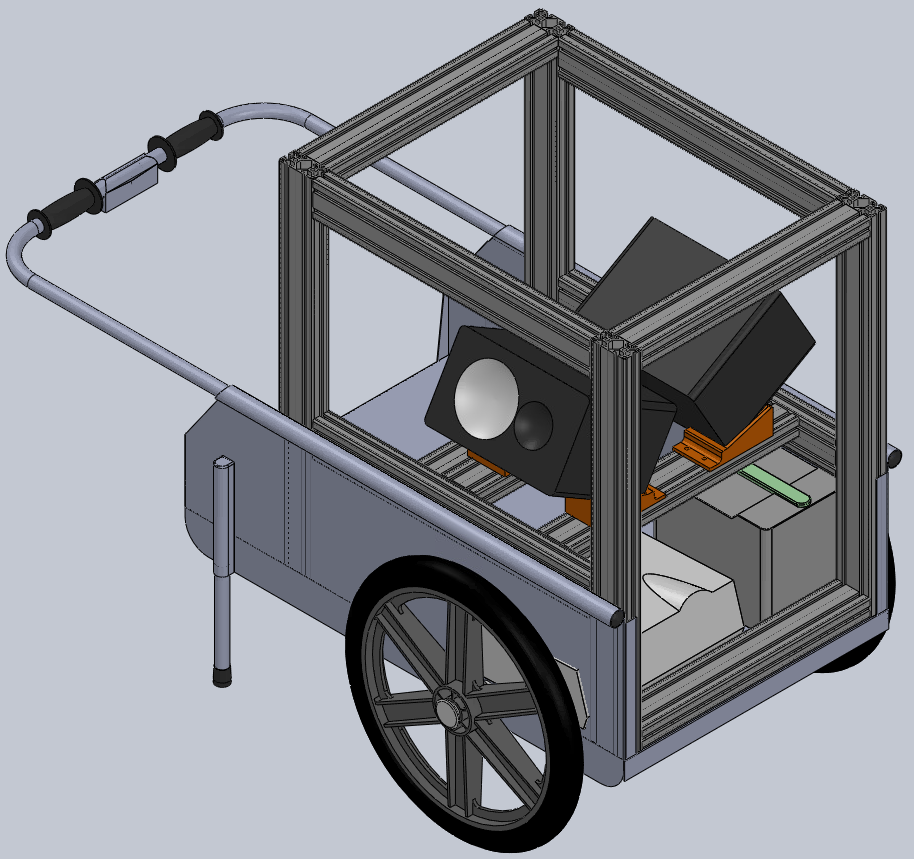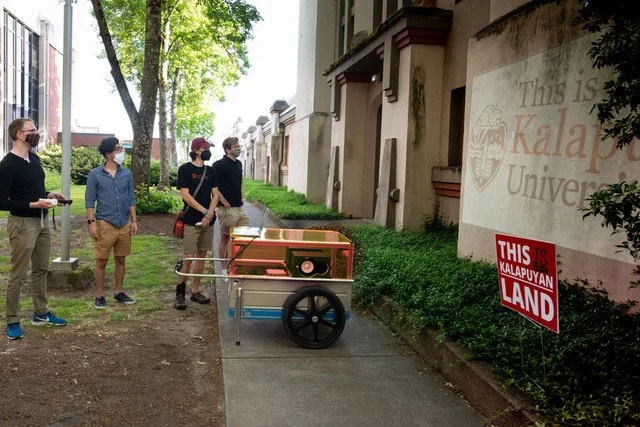MPG | Mobile Performance Group
I was a founding member of the original Mobile Performance Group started at Stetson University, DeLand Florida, around 2004 under the direction of Nathan Wolek and Matt Roberts. Experimenting together, we broke many barriers in mobile computing. Applications we designed to meet the demands of our new mobile performance practices laid the foundational concepts for much of my applications thereafter and continue to inspire me. The original project was called "Parking Spaces". Also, check out the archived mobileperformancegroup.com website
We had a saying in MPG: “M-P-G for Life!” While the Stetson chapter of MPG has closed, the legacy still lives on and continues to evolve in my own MPG spin-ups with students at my institutions of work.
OEDO | Oregon Electronic Device Orchestra’s MPG
OEDO's Mobile Performance Group is a guerrilla-style multimedia collective of electronic musicians and digital artists with one goal: to being new music/art out of traditional concert halls and gallery spaces to pursue audiences in new contexts.
All of our media is site-specific, collected from the location we intend to perform. In this case, all the sights and sounds are from the University of Oregon campus.
MPG's DangerKart, crafted out of aircraft aluminum and laser-cut plexiglas, is our mobile media command center equipped with portable power, wireless router, wireless audio server, DMX lights, video projector, mixer, and studio monitors.
Creating new wearable technologies, each individual is transformed into a powerful, walking mobile-media platform. Musicians wander around outside and perform with hand-held data-driven instruments that are sonified with wearable bluetooth speakers. They wirelessly send their individual sound to the DangerKart central audio server for analysis, processing, and video interactivity. All MPG members are synchronized through a sophisticated wireless music network system to play in tempo and in the same key.
Check Engine Project
Recent survey data from The International Journal of Behavioral Nutrition and Physical Activity found that, outside of sleeping, the largest collective contributor to energy expenditure among the population of the United States was "driving a car." Furthermore, the same source mentions the average person spends about 15 hours per week in their vehicle. Note, this is not simply the time you spend in the day, but actual time expending our energy. The space within a car is a rich multi-sensory environment encompassing a constant stream of visual, sonic, tactile/haptic, and even oral-factory stimuli (those who have pulled over at the smell of burning rubber or engine coolant know what I mean). The driver is part of a sensory-mechanical feedback loop. All the senses inform how to continually adjust this sophisticated mechanical system. In a way, the car is a kind of interactive kinetic "sculpture musicale.”
There can be more than 100 micro-controllers in cars today, making them essentially computers on wheels. We can use a something called OBD2 (which stands for onboard diagnostics) as a gateway into the car’s computer. Another aspect that fascinates me is the juxtaposition of two different spaces: the consistency of the space within the car and the continually unfolding environment outside, with the structure of the vehicle itself serving as the liminal frame separating the two. The aim of this project to take the dynamic sonic landscape from outside the vehicle using contact microphones to create an aesthetic translation played inside of the car using its audio system. The sound collected from the outside is transformed using realtime data including: engine load, oil temperature, accelerator position, RPM, MPH, wheel position, altitude, heading, and more. This data is collected using: - OBD-II CAN bus to access the car computer data - Smartphone transmitting GPS location, direction of travel - eMotion Tech's Twist, transmitting the acceleration and rotational inertia of the steering wheel, the car's most sensitive point of connection with the driver. All of this data can be translated to control musical parameters of the remixed environment. The output is essentially a synthesis of the outside environment, the car's mechanical behavior, the predetermined parameter mapping, and the actions of the driver.
BEAVR | Big Electronic Audio-Visual Rover
During the COVID-19 pandemic, Oregon State Students and I designed BEAVR: Big Electro Audio-Visual Rover. The idea is to be able to roll up virtually anywhere a bike can go and have a powerful performance studio and installation gallery space right there with you. It is particularly well suited for out-door and ad-hoc socially-distanced environments. It uses a fold-it cart and fold-able aluminum extrusion frame that can either be hand pulled or hitched to a bike and compressed into a tight car trunk for transport. Laser-cut and etched neon orange acrylic plexiglas is not only on-brand but also serves to form the structure for inserting: ultra-bright short-throw projector, audio system, RGB stage light, wireless router for transmitting realtime performance data for interactivity, laptop computers, and portable power with wall-plug and solar possibilities. This is a re-boot of an older design some students and I came up with at the University of Oregon in 2015.

